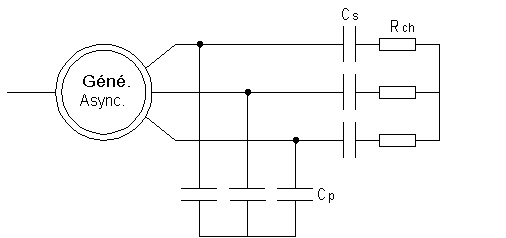The handling is quite easy because it is enough to add a (single-phase) or 3 (three-phase) capacitors on the supply of the coils.
A) To start
A document to read on the conversion of engine to alternator, generator or dynamo (depending on engine technology)
B) For the values of the capacitor to put:
- Coarse approach: The capacitance in µF of this capacitor is calculated as follows: 2% of the motor power in W
- Finer approach (value in µF I presume?):
boubka wrote:here is an exel calculation table which gives you the exact value
https://www.econologie.info/share/partag ... A7FBhN.xls
C) Here is a specific example made by our dear André:
Andre wrote:On my test bench small panton engine it is a 1/2 hp single phase 110volt engine which acts as generator it is enough to place in parallel a capacitor of 8 to 16 microfarad type paper (coming from ballast mercury lamp) a load of 3 lamps lamps of 100watt and it is quite stable there is just the frequency and voltage which adapts at RPM , but if the drive around the speed indicates the engine it is good
I used this assembly for a long time to do my load tests
Andre
the engine is used to start then it becomes generator for the load






